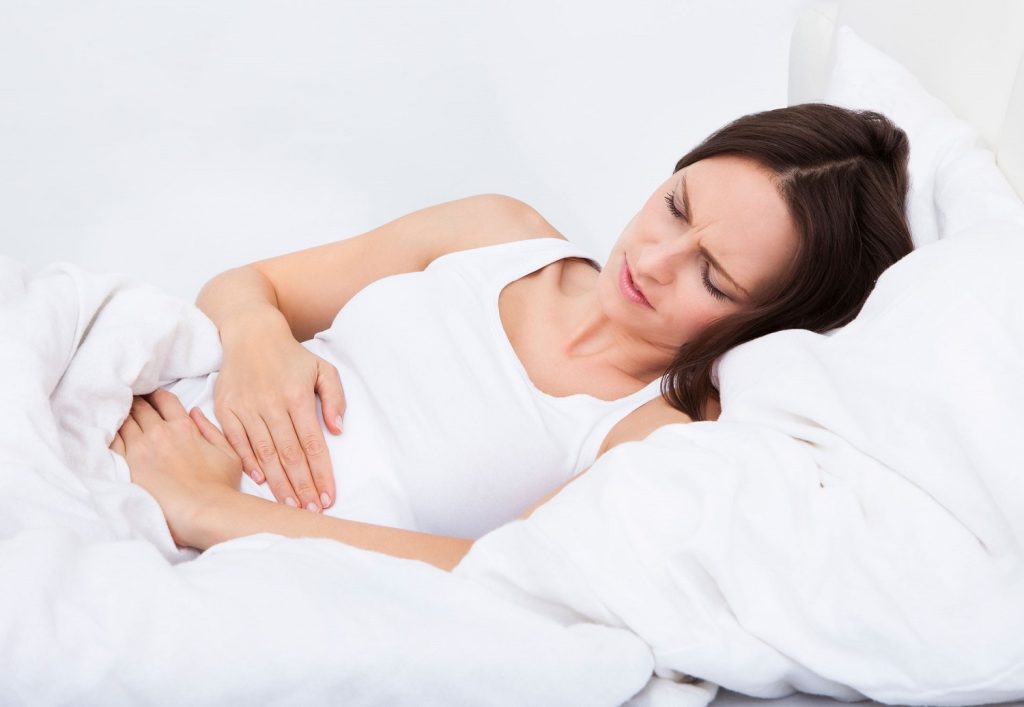Laparoscopy is a simple way of looking into the abdominal and pelvic cavities without making a large incision. It is a valuable technique for establishing the cause of female infertility and evaluating other pelvic pathology. Laparoscopy is made possible by using a laparoscope, which is a miniature camera attached to a special optical system (fiber optics).The laparoscope provides excellent visualization of the abdominal cavity. With the help of this state-of-the-art technology, the uterus, fallopian tubes, and ovaries can be easily examined. Additional tests, such as evaluation of tubal potency and collection of biopsies, can also be performed laparoscopically.
To provide an accurate diagnosis of the cause of infertility, laparoscopy is performed during the second part of the menstrual cycle (after ovulation). However, in selected cases it may be performed at other times in the menstrual cycle.
In this page you can find:
- The Laparoscopy Procedure
- After Laparoscopy
- Possible Complications
- Post-operative Instructions
- Follow-up Surgery
- Associated Procedures
- Hysteroscopy
- Dilatation and Curettage

The Laparoscopy Procedure
Recent technological developments enable our experienced surgeons to diagnose and treat infertility through laparoscopy. Our expert laparoscopic surgeons can remove fibroid tumors, resect ovarian cysts and tumors, dissect pelvic scar tissue, and perform some degree of tubal reconstruction through very small incisions. This prevents future need for an extensive abdominal incision and exploratory laparotomy (full abdominal surgery).
Before surgery, the patient is given general anesthesia to put her to sleep. To begin the laparoscopy procedure, the surgeon first insufflates the abdomen with carbon dioxide (CO2) and then inserts the laparoscope through an incision made under the navel. The clear CO2 gas in the abdomen allows the surgeon to easily examine the pelvic organs.
The laparoscope’s video camera allows the surgeon to perform the operation while looking at a television screen. This enables the surgical assistant to be more efficient and frees the surgeon’s hands to manipulate the various surgical instruments. At the end of the procedure, the CO2 gas is released and the instruments are removed. The small incisions are closed with sutures or steri-strips and covered with small bandages.
Our infertility specialists and laparoscopy surgeons are among the best in Chicago and Northwest Indiana. They have achieved an incredible amount of successful results, and will do everything possible to make you feel comfortable before, during, and after your procedure.
After Laparoscopy
After laparoscopy, some women may experience shoulder and neck discomfort due to irritation from gas trapped in the abdomen. This pain can be sharp at times, and is aggravated by deep breaths. Some discomfort can also be expected at the abdominal incisions, and a sore throat occasionally results from anesthesia. Patients can often relieve discomfort with bed rest and an over-the-counter medication, such as Advil® or Tylenol®. Our patients also receive a prescription for a stronger pain medicine if needed.
Some bloody discharge following surgery is to be expected, but this should resolve on its own within a day after surgery. However, some residual fatigue and minor aches might linger for few more days. Most patients can return to their regular activities two days after laparoscopy. The sutures will dissolve by themselves in few weeks, and do not have to be removed unless otherwise indicated.
Possible Complications
The complications associated with laparoscopy are extremely rare, especially in the hands of an experienced surgeon. Occasionally, safe and adequate distention of the abdomen with CO2 may prove to be difficult or impossible. In such cases, the procedure may have to be halted.
In rare circumstances, injuries to abdominal organs, such as the spleen or intestines, have occurred during a laparoscopic procedure. For such injuries, a laparotomy might be necessary to stop bleeding or make repairs. This requires a longer hospital stay. Any such rare complications are immediately diagnosed and treated. Our outpatient surgical center is well equipped to handle major abdominal surgery should it be needed. When such surgery is performed, the patient will be transferred to a hospital following the procedure.
Post-Operative Instructions
Below are important post-op instructions for infertility patients who undergo laparoscopy. Please contact your doctor if you have any questions or concerns.
Anesthesia
Reaction to the anesthetic is unpredictable; some patients have no side-effects at all while others experience generalized fatigue lasting a day or more. During the first 24 hours following surgery, you may have a sore throat from the anesthesia tube placed in your windpipe during the procedure. Shoulder and chest pains caused by gas trapped inside the abdomen may also cause discomfort. This trapped gas is harmless and will dissipate in a few days. Lying flat in bed can often relieve this discomfort.
Diet
You might not regain your appetite immediately after laparoscopy. You may however, eat or drink in moderation as soon as you feel like it. We suggest that you do not consume any alcohol for 24 hours following surgery.
Activity
You should not drive your automobile for 24 hours after surgery; most patients prefer one to two days of home rest before they begin to drive again. However, you can return to work the day after your procedure if you feel up to it. Occasionally, some patients take longer to recuperate fully. The recovery time varies between women. While some women return to their regular activities the day after surgery, others need four or five days of rest.
Sexual Intercourse
You should abstain from sexual intercourse for two weeks following surgery. Due to cervical dilation in surgery, intercourse during this time might cause infection.
Pain
If you have a sore throat, use standard, non-prescription anesthetic throat lozenges or mouth rinse to soothe and hydrate your throat. A shoulder or chest ache can usually be controlled by two Advil® tablets every four hours.
Immediately notify your physician if you experience:
Any increase in abdominal pain that cannot be controlled by Advil® or other pain medications you receive;
A fever higher than 100° F following surgery
Wounds
The stitches from laparoscopy are hidden beneath the skin and will dissolve with time. The bandage should be changed daily. You may shower the day after your surgery, but do not take a bath for two weeks.
You may wash the wound gently with soap and water – it is essential that you do not rub the wound. Also, be sure to carefully dry the incision completely. Report any signs of infection, such as pus-marked swelling or redness at the incision site, to your doctor as soon as possible.
Menstruation
You should expect your menstrual period to appear on schedule or a few days earlier than usual. However, the flow might change and be either lighter or heavier, and occasionally might be accompanied by clots. Slight vaginal bleeding following surgery is normal. If necessary, use a menstrual pad. Do not use a tampon for two weeks following surgery. Call your physician if there is excessive bleeding.
Return Appointment
A follow-up appointment should be made within one week after your laparoscopy.
Follow-Up Laparoscopy
Occasionally after extensive laparoscopic infertility surgery, patients require follow-up laparoscopy. This is most often required after procedures such as removing uterine or ovarian tumors or after dissecting extensive adhesions (scar tissue). After surgery of any kind, scarring remains after incisions heal. Scar tissue inside the pelvis can cause tubal dysfunction. In some cases, adhesions begin to form immediately after the operation, transforming into thick, vascular bands within two to three months.
Follow-up laparoscopy performed within two to three weeks after the initial surgery enables the surgeon to interrupt scar formation at the very beginning of the process. This early intervention minimizes tissue trauma and decreases the risk for further adhesion formation. In fact, the entire success of the initial surgery might depend on the follow-up procedure when extensive pathology is present.
Associated Procedures
Two infertility surgeries associated with laparoscopy are hysteroscopy and D&C. Both of these procedures are methods of diagnosing and treating a variety of conditions within the uterus. While there is a risk of uterine perforation during both operations, this complication is very rare and often requires no further action since the uterus readily heals itself.
Hysteroscopy
Hysteroscopy is used to directly visualize the inside of the uterus. The surgeon introduces the hysteroscope into the uterus through the cervix. He then distends the uterine cavity and carefully explores it. This procedure increases the accuracy and effectiveness of diagnosing intrauterine pathology, such as uterine tumors or uterine scarring. It is also useful in confirming the presence or absence of abnormal findings in a hysterosalpingogram. More extensive hysteroscopic surgery can be performed to treat tumors, scars, or other intrauterine pathology.
D&C – Dilatation and Curettage
D&C stands for dilatation and curettage. The surgeon first gently dilates the uterine cervix and then removes tissue samples from the walls of the uterus. In this way he may assess adequate maturation of the uterine lining (endometrial dating) and rule out other pathology. The doctor will also use a small instrument known as a curette, which serves as an extension of the surgeon’s fingers to feel any irregularities within the uterine cavity.
For more information about hysteroscopy and D&C, infertility treatments or to schedule a laparoscopy consultation in Chicago or Northwest Indiana, please contact Midwest Fertility Center today.
